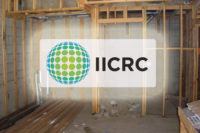A Two-Step Solution to Managing the Risk of Subcontractors
As I look back on 10 years worth of loss records on the restoration firms we insure, more than 90% of the reported claims involve a subcontractor




Hiring subcontractors in the restoration business is a way of life. Very few owners of restoration firms appreciate how risky subcontractors can be or how easily this risk can be reduced.
As I look back on 10 years worth of loss records on the restoration firms we insure, more than 90% of the reported claims involve a subcontractor. The really bad losses involved a “pollutant.” In those situations it is very common for our client to have a lot better insurance coverage in place than the subcontractors they hire. Guess who’s insurance ends up footing the bill?
If you ignore the risk issues inherent in the work performed by subcontractors, your restoration firm as the general contractor on the job will end up paying for all of the losses on a job. It does not need to be this way. By implementing just a few simple risk management strategies that you can actually copy from others who are good at it, you can shift the subcontractor risk away from your firm and your insurance loss records.
If you want to see a real live example of good risk management of subcontractors in practice, just look at the contractor selection and insurance requirements used by the restoration networks. Go to their websites and see what it takes on insurance to become part of their network.
The restoration networks manage risk in a simple two-step process:
- They look for firms that evidence expertise and quality in the work they do.
- They specify and verify that the contractors working for them purchase insurance coverage that actually works to insure the firm for the work to be conducted.
How simple is that?
Most restoration firms do a good job with Step 1 above when hiring subs. In most towns, it is not very difficult to figure out if an artisan contractor does quality work.
Where things fall apart in the restoration firm’s risk management strategy is in the insurance requirements that the firm uses to hire their subcontractors. There is no reason for this - there are plenty of readily available examples of good insurance specifications floating around the restoration contracting industry.
The first step in protecting your insurance loss record is to get a robust insurance specification built into your subcontractor agreements. You need to make it difficult for a subcontractor to insure you as an additional insured under a policy that excludes a lot of things that are important to have insurance coverage for. A complete insurance specification for a subcontractor can be found on our website at www.restorationinsurance.com. This sample document needs to be reviewed by your lawyer before you incorporate it into your subcontract agreement, but it is a starting point.
Some insurance specifications in the restoration business are 12 pages long for good reason. This is just a thumbnail sketch.
These are very basic insurance requirements with the exception of the CPL coverage which I will address separately below. If a subcontractor says “I cannot meet these requirements,” red flags and buzzers should be going off at your firm. There are only three reasons someone cannot meet these insurance specs:
- They are voluntarily uninsured to save themselves money by transferring their risk to you,
- They have such a poor loss history nobody will insure them at any price,
- They have engaged an insurance agent that cannot perform the task of finding insurance.
No. 3 is fixable, but find a different subcontractor if Nos. 1 or 2 become evident.
Why should you ask for CPL coverage from subs, isn’t that insurance just for mold remediators? A lot of insurance agents and contractors think that by mistake. A CPL policy fills the insurance coverage gaps created by common exclusions in General Liability policies for losses associated with:
- Pollutants
- Contaminants
- Fungus
- Mold
- Bacteria
- Asbestos
- Lead
- Silica
- Category 3 Water
Those exclusions apply to a lot of things that are common to restoration work. So no, CPL is not meant only for mold contractors. Any subcontractor who can create a water loss can hand you an uninsured liability claim if the word “mold” or “Category 3 Water” becomes involved in any sequence to the loss. Getting CPL from you subs is the best strategy. There are CPL policies available for as little as $2,500 that work pretty well for smaller artesian subs.
The second step in managing the risks of subcontractors is to monitor compliance with your insurance specifications. Your local insurance agent can be a helpful resource in this process. They should be able to point out inconsistencies with certificates of insurance. It is impossible to really know what the insurance policies purchased by your subcontractors really do cover simply from reading a certificate, but it is a good start to managing subcontractor risks and a lot better than doing nothing at all.
Where we see most of the CPL losses in the restoration business is the inadvertent exposure to asbestos, usually caused by a subcontractor on a job where no one expected asbestos. Because most contractors do not carry CPL coverage today, 100% of the claim ended up in the restoration firm’s loss records where they will stay for years and may make it difficult for you to obtain insurance even at very high premiums.
Implementing the simple two-step risk mangement process for subs is one of the most important things you can do to manage the risks in your overall operations.
Looking for a reprint of this article?
From high-res PDFs to custom plaques, order your copy today!











